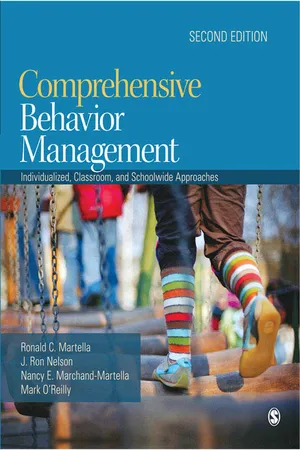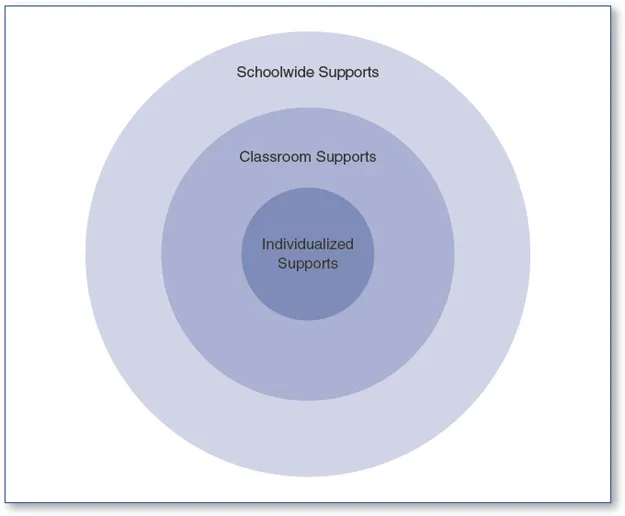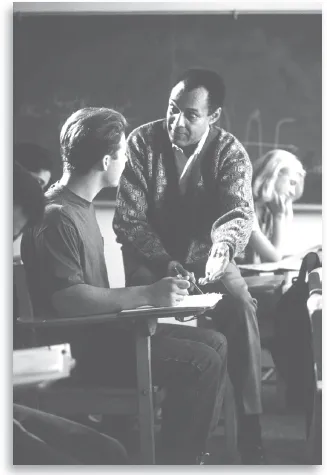
Comprehensive Behavior Management
Individualized, Classroom, and Schoolwide Approaches
- 456 pages
- English
- ePUB (mobile friendly)
- Available on iOS & Android
Comprehensive Behavior Management
Individualized, Classroom, and Schoolwide Approaches
About this book
Supporting teachers in preventing classroom management problems and responding to unwanted behavior when it occurs
Comprehensive Behavior Management: Schoolwide, Classroom, and Individualized Approaches supports teachers in preventing management problems and responding to unwanted behavior when it occurs in classrooms. The text offers a comprehensive presentation of three levels of behavior management strategies: individual, classroom, and schoolwide, all three of which contribute to a positive learning environment. A social learning emphasis in which human behavior is viewed within an ecological framework is integrated throughout the text. Application of this information is supported by a range of pedagogical devices such as vignettes, examples, strategies, and activities to show teachers how to manage behavior effectively. The analysis and applications in this text cover both general education and special education strategies.
Frequently asked questions
- Essential is ideal for learners and professionals who enjoy exploring a wide range of subjects. Access the Essential Library with 800,000+ trusted titles and best-sellers across business, personal growth, and the humanities. Includes unlimited reading time and Standard Read Aloud voice.
- Complete: Perfect for advanced learners and researchers needing full, unrestricted access. Unlock 1.4M+ books across hundreds of subjects, including academic and specialized titles. The Complete Plan also includes advanced features like Premium Read Aloud and Research Assistant.
Please note we cannot support devices running on iOS 13 and Android 7 or earlier. Learn more about using the app.
Information
Part I
Introduction to Behavior Management
1
Behavior Management Models
Chapter Objectives
- describe what is meant by discipline,
- explain how assertive discipline is implemented,
- define logical consequences,
- illustrate how to implement the reality therapy model,
- specify the approach of love and logic,
- describe the Ginott model,
- characterize the Kounin model,
- depict the Jones model,
- explain what character education is, and describe two character education programs,
- characterize the pros and cons of each of these models,
- list the five concrete recommendations to help teachers reduce common behavior problems,
- define the behavioral model and its characteristics,
- describe the misunderstandings of the behavioral model, and
- specify the right to effective behavioral treatment and the right to an effective education.
| VIGNETTE | Controlling Angry Outbursts Through Evidence-Based Practices |
Overview
| Figure 1.1 | Comprehensive Behavior Management Planning |


What Is Discipline?
What Are Some Popular Behavior Management Models Used in Schools?
| Table 1.1 | Sample of Models Used in Schools |
| Model | Key Aspects |
| Assertive Discipline | Teachers have the right to determine the environmental structure, rules, and routines that will facilitate learning. Teachers have the right to insist that students conform to their standards. Teachers should prepare a discipline plan in advance, including statements of their expectations, rules, and routines and the type of discipline method to be used if and when students misbehave. Students do not have the right to interfere with others’ learning. When students do not behave in a manner consistent with teacher expectations, teachers can respond in one of three ways: nonassertively by surrendering to their students, hostilely by showing anger, or assertively by calmly insisting and assuming that students will fulfill these expectations. Students choose to misbehave, and teachers should not accept their excuses for such misbehavior. Teachers should use positive and negative consequences to convince students that it is to their benefit to behave appropriately. Teachers should not feel bad if forced to use harshly negative consequences when necessary because students want teachers to help them control themselves. Teachers have the right to ask for help from parents and school administrators when handling student misbehavior. |
| Logical Consequences | Inappropriate behavior is motivated by unconscious needs, e.g., to gain attention, exercise power, exact revenge, or display inadequacy. If the motive for attention is satisfied, inappropriate behavior associated with other motives will not be manifested. Students can learn to understand their own motives and eliminate misbehavior by having teachers help them explore why they behave as they do. Presenting students with a choice offers a sufficient basis on which they can learn to be responsible. Students react to life based on their birth order. We learn through our interaction with our environment. Within this interaction, our behaviors are exposed to natural, arbitrary, and logical consequences. Natural consequences are usually the most effective form of negative consequences. If we cannot rely on natural consequences under all circumstances, we can use arbitrary or logical consequences. When teachers have the option of using arbitrary or logical consequences, logical consequences should be chosen because students behave more appropriately when they suffer the logical consequences for their misbehavior. |
| Reality Therapy | Students are self-regulating and can learn to manage their own behavior. Students learn responsible behavior by examini... |
Table of contents
- Cover Page
- Title Page
- Copyright
- Brief contents
- Detailed contents
- Preface
- Acknowledgments
- PART I. INTRODUCTION TO BEHAVIOR MANAGEMENT
- PART II. INDIVIDUALIZED SUPPORTS
- PART III. CLASSROOM SUPPORTS
- PART IV. SCHOOLWIDE SUPPORTS
- Glossary
- References
- Index
- About the Authors